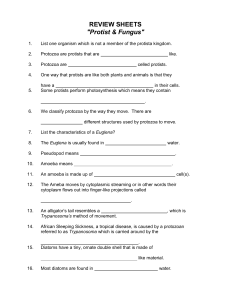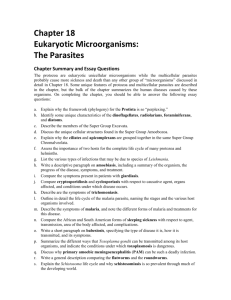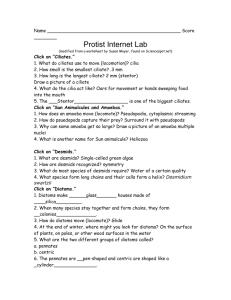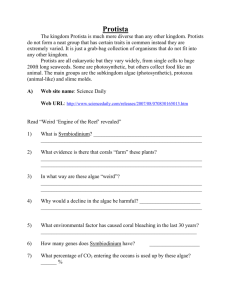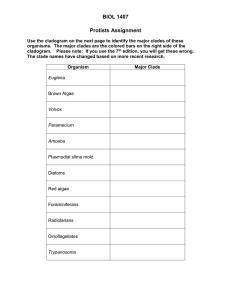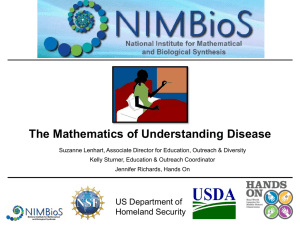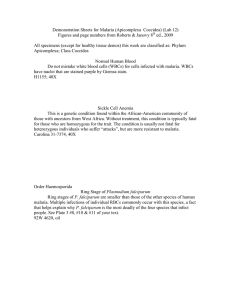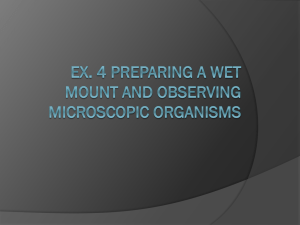KINGDOM PROTISTA LAB
advertisement
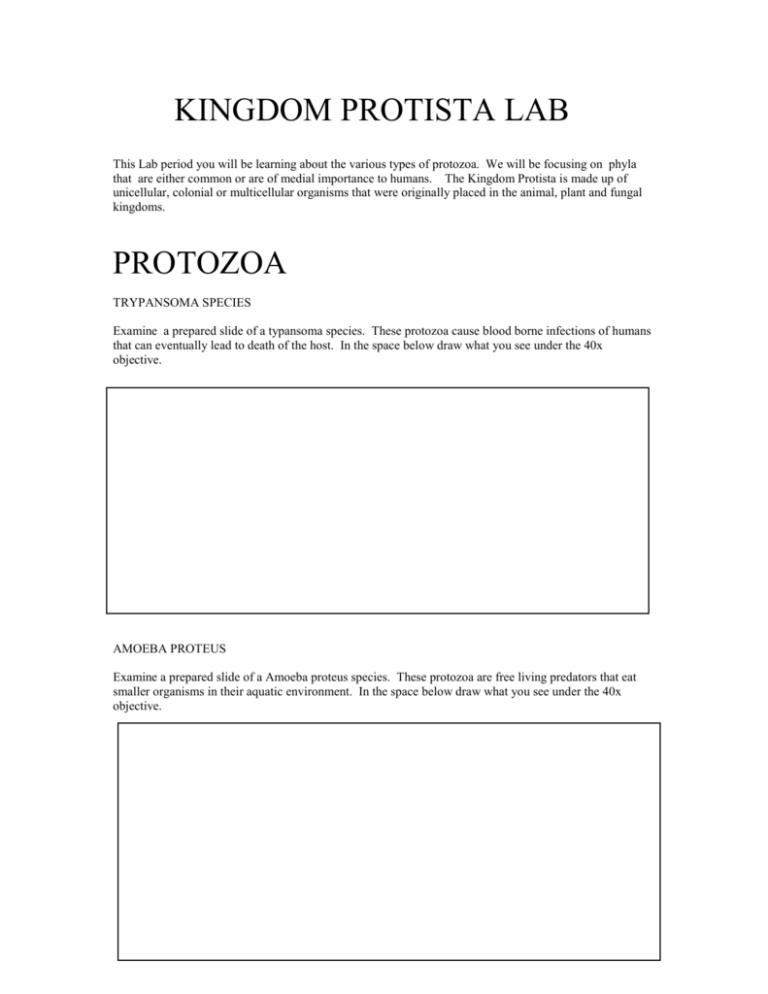
KINGDOM PROTISTA LAB This Lab period you will be learning about the various types of protozoa. We will be focusing on phyla that are either common or are of medial importance to humans. The Kingdom Protista is made up of unicellular, colonial or multicellular organisms that were originally placed in the animal, plant and fungal kingdoms. PROTOZOA TRYPANSOMA SPECIES Examine a prepared slide of a typansoma species. These protozoa cause blood borne infections of humans that can eventually lead to death of the host. In the space below draw what you see under the 40x objective. AMOEBA PROTEUS Examine a prepared slide of a Amoeba proteus species. These protozoa are free living predators that eat smaller organisms in their aquatic environment. In the space below draw what you see under the 40x objective. PLASMODIUM SPECIES The plasmodiums cause the number one communicable disease in the world, malaria. While malaria is considered to be a tropical disease it can be found as far north as Siberia and Manchuria. Plasmodium vivax caused malaria in the southern portions of the United States until public health officials began a mosquito irradication program early in the 20 th century. Malaria is a blood borne disease. Examine a prepared slide of a Plasmodium species. Look for the malaria parasite in the red blood cell. ALGAL PROTISTS DIATOMS The diatoms are the most numerous algae that are found in aquatic environments and form the base of aquatic food chains. It is the diatoms found in city water supplies that give them their distinctive tastes. Examine a prepared slide of a diatom. Draw what you see under 40x in the box below. SPIROGYRA The spirogyra are filamentous algae that contain spiral chloroplasts. They are common in freshwater environments. Examine a prepared slide of spirogyra and draw what you see in the box below. DESMIDS Desmids are algae that appear to be two separate cells but are actually unicellular. If you look carefully you can count 1 to 4 large chloroplasts. Examine a prepared slide of desmids and draw what you see below. POND WATER Make a wet mount of the pond water and examine it under the microscope. Using the algae identification book provided see if you can identify some of the species. Draw what you see below.
